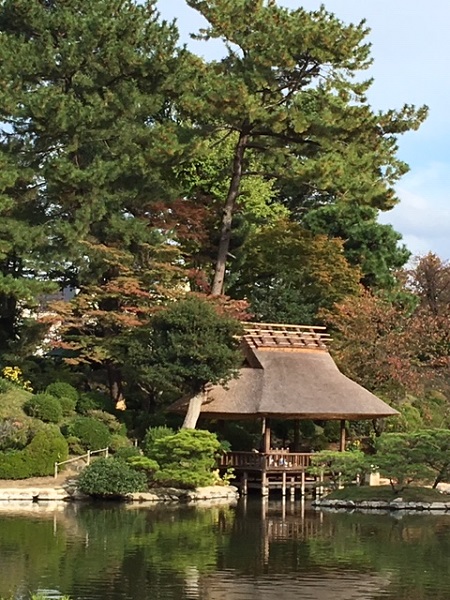
We reached Kurashiki by train from Osaka. This charming town located in Okayama Prefecture on the South Coast facing out to Shikoku has an old quarter going back to the eighteenth century.
It was an easy 15-minute walk from the train station to the historic canal area. Here the old black-tiled warehouses, where rice from the surrounding farmlands used to be stored, have now been converted into museums and other attractions. We joined the many tourists, mainly Japanese, who come there to soak up the unique atmosphere.
The main attraction in Kurashiki is the Ohara Art Museum, a private museum which was founded in 1930 by Kurashiki entrepreneur and art collector, Ohara Magosaburo. It holds the oldest collection of Western Art in Japan in charming old buildings. As well as an impressive collection of paintings by well-known Western artists including El Greco, Gauguin, Monet and Matisse, there was a collection of Chinese and Egyptian Art and a selection of pottery from the Mingei era which was an unexpected pleasure.
A Japanese tour guide, whose wife was a potter, introduced himself to us and we got talking. He was fascinated to hear that the Mingei craft movement had been a huge influence on New Zealand potters in the sixties and seventies via the English potter Bernard Leach and that the revered Mingei potter Shoji Hamada had once visited New Zealand.
Hiroshima
From Kurashiki it was a quick trip on the shinkansen to Hiroshima; the city which was obliterated during World War Two by an atomic bomb on 6 August 1945 immediately causing 90,000 civilian deaths, and many more later from radiation sickness. Over the years it has been completely rebuilt and is now a modern Japanese city with a lively youthful vibe.
Our main reason for going there was to pay a visit to the Hiroshima Peace Memorial Museum. It was an extremely sobering experience. The big crowd shuffling past were silent as they moved.
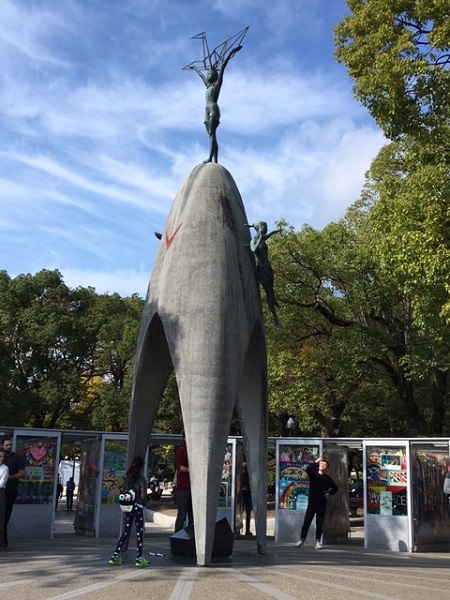
Afterwards, we took a walk in the Peace Memorial Park in the centre of the city. I stood for a while before the Children’s Peace Memorial, dedicated to the memory of children who died as a result of the bombing. At the top of the statue stands Sadako Sasaki, a young girl with outstretched arms holding a golden crane. Sadako was a healthy child and a first-class runner who unexpectedly developed acute leukaemia 10 years after being exposed to radiation on the day the bomb fell on Hiroshima. In hospital, inspired by an old Japanese belief that if you fold 1000 origami cranes your wish will come true, she spent her last days folding cranes hoping she could be cured. Her classmates (all of whom had lost family members or were themselves survivors) built this monument to honour their popular classmate.
It brought back memories of how I had once shared the story of this brave young girl with my Secondary School students. The many origami cranes they folded to commemorate Hiroshima Day were carried back to Hiroshima by a small Japanese drama group which was visiting our school. To this day, children from all over the world send cranes to Hiroshima to be placed near the statue which has become an international symbol of peace.
Okonomiyaki
In Hiroshima, okonomiyaki pancakes are a dish which must not be missed! We ventured out to a building housing about 30 okonomiyaki restaurants. Okonomiyaki is so popular with the locals, we were lucky to find a couple of spare seats. They were speedily made in front of us on large hotplates.
Unlike its equally famous Osaka cousin, where the batter is mixed with the cabbage and other ingredients, in Hiroshima, each ingredient is stacked on top of each other before being covered with layers of yakisoba noodles, eggs, sauce and toppings. It was comfort food and fun eating them surrounded by so many enthusiastic locals enjoying Hiroshima’s favourite food.
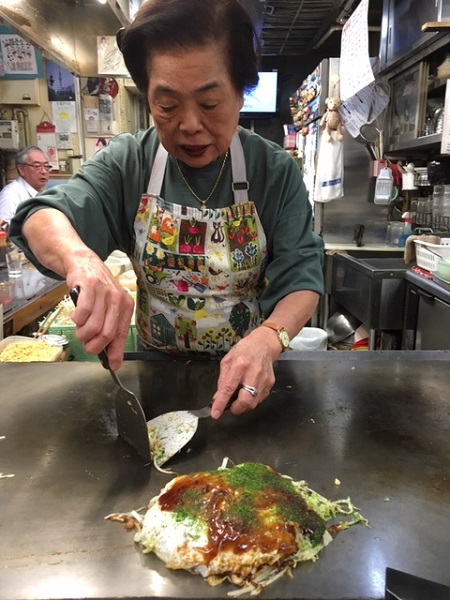
But the dinner I enjoyed most in Hiroshima was the casual and very cheap one we ate at a tiny noodle house just around the corner from our hotel. There was just one other family and a secondary school student there who were soon engaging us in a friendly conversation. As we left the chef handed us an origami star as a souvenir with a beaming smile.
Miyajima Island
The following day we made a day trip to tiny Miyajima Island famous for the vermillion floating Torii Gate of Itsukushima Shrine. The shrine is dedicated to the Shinto gods of sea and storms.
We joined hundreds of Japanese families enjoying a fine Sunday. Part of the fun was the many sacred deer freely wandering around who are continually on the lookout for a share of people’s lunches.
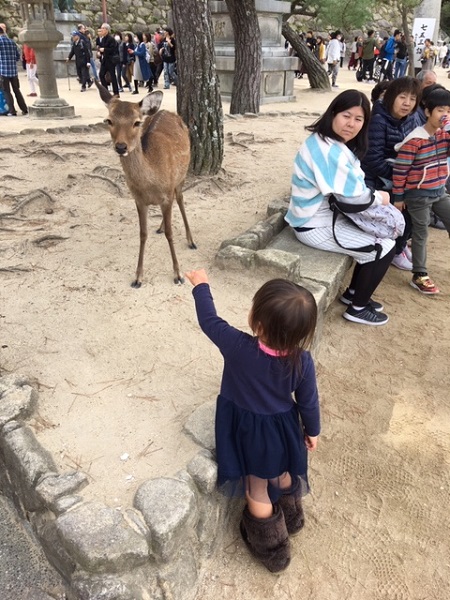
Near the shrine was a shopping street with a large number of fairly touristy shops and fast-food outlets. Oysters and maple shaped sweet pastries are the food Miyajima island is best known for. But there was plenty of other food to choose from. To get away from the crowds, we walked along a bit further and enjoyed the view of the forested hills.
The Shukkeien garden
Back in Hiroshima, we finished off the day at the Shukkeien garden, an Edo Landscape garden originally built for a feudal lord of the Hiroshima domain in the seventeenth century. It was a nice surprise to find we qualified for free entry because of our age. This garden too had been badly damaged by the bomb but has been beautifully restored. We walked around the large central pond over scenic bridges and past thatched tea houses.
I had been apprehensive about visiting Hiroshima but was glad we had come. Although the images of the terrible carnage caused by the atomic bomb, which we saw at the Hiroshima Peace Memorial Museum, stay etched in my mind, I will also remember Hiroshima as a vibrant city which has been rebuilt, and its serene and peaceful garden.
Reviews by Lyn Potter








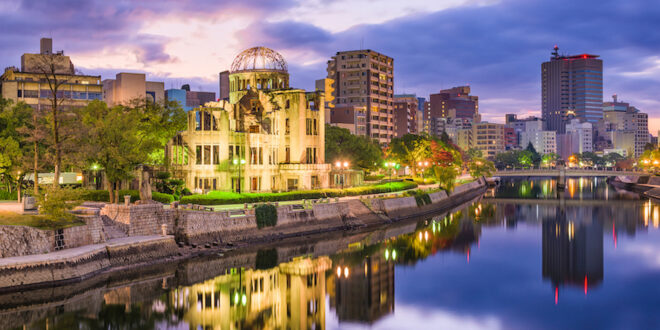
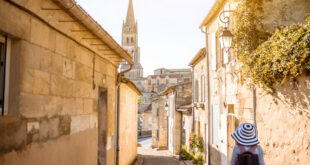

Join the Discussion
Type out your comment here:
You must be logged in to post a comment.